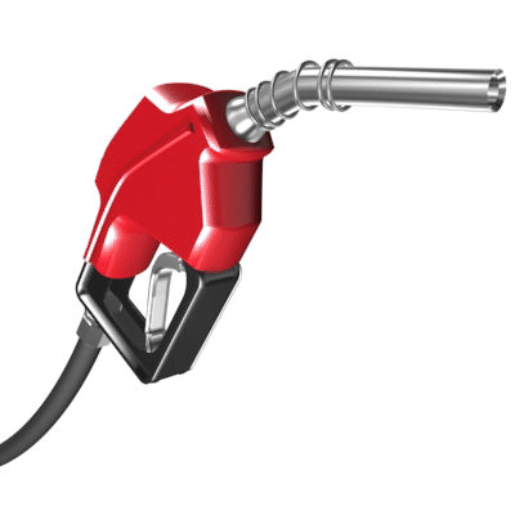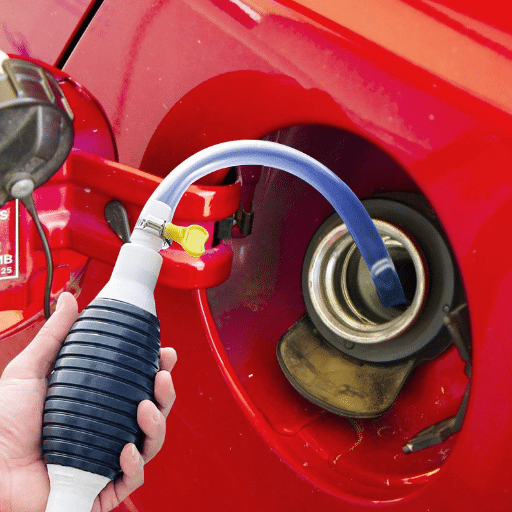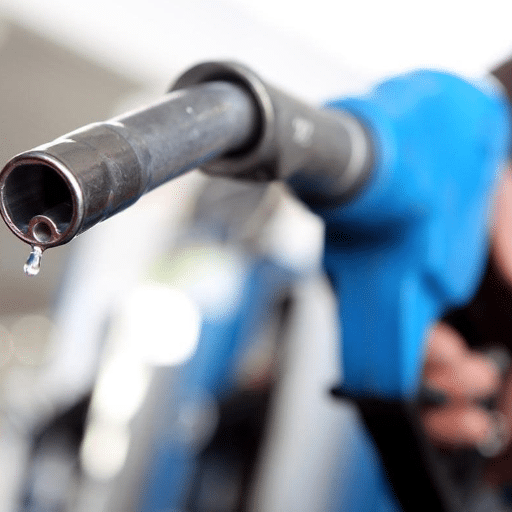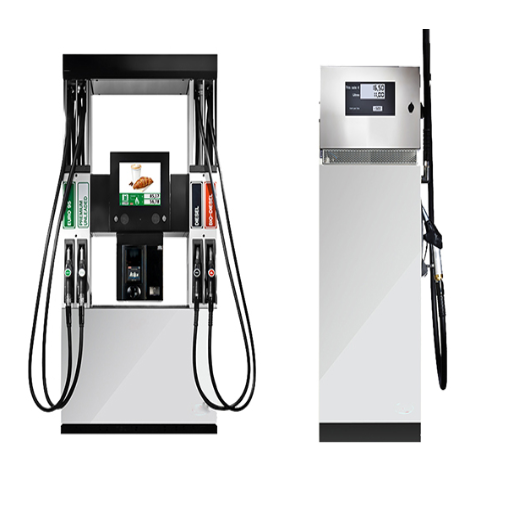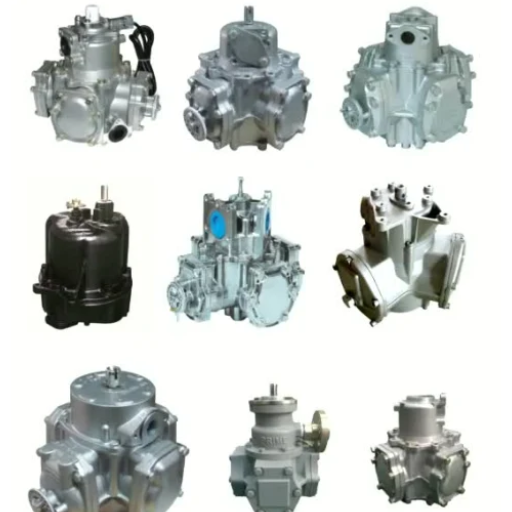Opening a gas station is a profitable business that requires some hefty financial considerations. From the initial investment in real estate and construction to operational expenses, the cost of setting up a gas station can vary greatly from state to state, size, and extra amenities. This blog offers an insight into agents causing this cost, thereby giving potential entrepreneurs a clearer picture of what it actually takes to turn such an idea into reality, and if you want either to operate an independent station or get a franchise, we will list out the key expenses involved and major considerations to help with your planning. So, keep reading to know the major components impacting startup costs with regard to gas stations and how they may suit your business objectives.
Understanding Startup Costs for a Gas Station
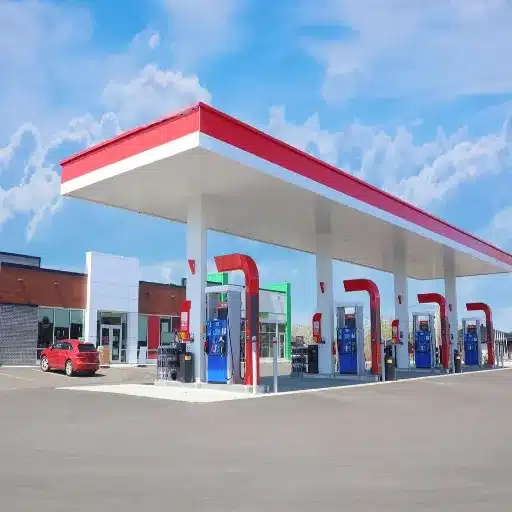
Starting a gas station involves several significant costs that you need to make sure to cover in order to maintain smooth operations. Below are the chief expenses:
Key Startup Expenses
- Real Estate or Leasing – Buying or leasing the land is usually the biggest upfront cost, and location is a big variable in price
- Construction or Renovation – Building a new station from scratch, or modifying an existing one, can mean large costs depending on the size of the job involved
- Fuel Supply – You shall require a first inventory of fuel with a contractual agreement for supply from a supplier of fuel. These costs vary according to market prices
- Equipment – This is another major expense that includes fuel pumps, storage tanks, and fixtures for the convenience store
- Licensing and Permits – Some permits and licenses may be required for the gas station, and these can vary widely depending on local regulations
- Staffing and Training – Your budget will also require initial paychecks and training costs for employees
- Marketing and Branding – Finally, some marketing expenses will also be required to promote the gas station or establish the franchise branding
Addressing these key areas will give you clarity in financial matters and help you make better decisions as you plan for your gas station business.
Initial Investment Breakdown
When establishing a gas station, initial investment may be considered in a few major categories. Based on research from a few of the leading sources, we present to the reader a short listing:
| Investment Category | Cost Range | Key Factors | Additional Notes |
|---|---|---|---|
| Land and Property Costs | $100,000 – $2,000,000+ | Location, size, zoning | Greatest expense category, varies significantly by region |
| Construction and Equipment | $500,000 – $1,000,000 | Station size, safety standards | Includes fuel tanks, pumps, environmental compliance |
| Licensing and Permits | $5,000 – $50,000 | Local regulations, environmental permits | Includes fuel supply agreements and compliance certificates |
| Inventory Costs | $50,000 – $150,000 | Store size, fuel capacity | Initial fuel supplies and convenience store merchandise |
| Staffing and Training | $20,000 – $50,000 | Staff size, experience level | Initial payroll and comprehensive training programs |
| Marketing and Branding | $10,000 – $30,000 | Market presence strategy | Brand identity establishment and initial promotion |
Total Initial Investment Range: $685,000 – $3,280,000+
A lot of cash flow and financial planning would go into opening a gas station. Considering these various costs, you should be able to put together an investment strategy that is organized and well-informed.
Operational Costs: What to Expect
Running a gas station bears numerous recurrent expenses that encompass proper day-to-day functioning. Prominent operational expenses consist of the fuel purchase itself, whereby procurement costs vary with global oil price, local demand, and supply, the largest one most of the time.
Monthly Operational Expenses
- Salaries and Benefits: Labor costs generally ranging between $30,000 and $50,000 a year for a small station, depending on locally prevailing wage laws and the number of employees
- Utility Bills: Electricity, water, and gas average about $2,000-$5,000 a month for a business owner
- Maintenance and Repair: Payment for these services can be anywhere between $500 and $2,000 a month, depending on the size of the station and its state of repair
- Insurance Costs: Average $12,000 to $20,000 per year for such things as liability and property protection and workers’ compensation
- Technology and Software: $1,000 to $3,000 per year is invested in technology and software to facilitate POS and inventory management
- Licensing and Permits: Recurring costs usually average about $1,500 to $3,000 a year
Through prudent forecasting of such operating costs, an owner may better prepare themselves for the financial demands of successfully running a gas station.
Financing Options for Opening a Gas Station
Financing is secured for opening a gas station if the initial investment is between $250,000 and $2 million, with the other parameters being size, location, and brand affiliation of a station. The financing options available to cater to such needs include:
Small Business Administration (SBA) Loans
The SBA has loan programs to assist small businesses, one of which is the 7(a) Loan Program. These loans are generally afforded at low-interest rates and generous repayment terms. For owners of gas stations, an SBA loan can finance a large chunk of the startup costs, from buying the property to erecting the station and purchasing equipment.
Traditional Bank Loans
There are many commercial banks that lend money to gas station businesses. These may require a good business plan as well as good credit history and a down payment of about 10-30% of the project. Rates and terms vary per lender but tend to favor very qualified applicants.
Franchise Financing Programs
Brands such as Shell, Exxon, or Chevron themselves may offer financial assistance to the franchisees. Besides low-interest loans, such programs may offer incentives for the development of new stations and consulting services for operational setup. Having a branded gas station partner helps with further financial support from other sources, as it stands as almost a guaranteed blueprint on how to run the business.
Equipment Financing
Specialized equipment financing allows an owner to lease or purchase essential equipment such as fuel pumps, POS systems, and refrigeration units. This type of financing enables them to pay for costly equipment over time, allowing for better cash flow management.
Investor Funding
This is most importantly opening the private investors or partnerships as a source of capital to the aspiring gas station entrepreneur. Depending on the service of the presentation of a complete business plan with projected revenues, this alternative might appeal to one or more individuals or investment groups searching for an attractive prospect in the fuel retail sector.
Alternative Lenders
Alternative lenders are there for applicants who have been offered no chance with conventional lenders. They tend to offer quicker approval rates, but interest rates and conditions are less generous. Online lending platforms and peer-to-peer lending arenas are becoming increasingly popular in alternative financing.
When assessing the finance options, entrepreneurs need to evaluate the interest rates, repayment terms, and any special conditions attached to any loans or funding programs. Such advisers or consultants working in the finance sector can help identify the most suitable and cost-effective way to enable an entrepreneur to start a successful gas station business.
Cost to Open a New Gas Station
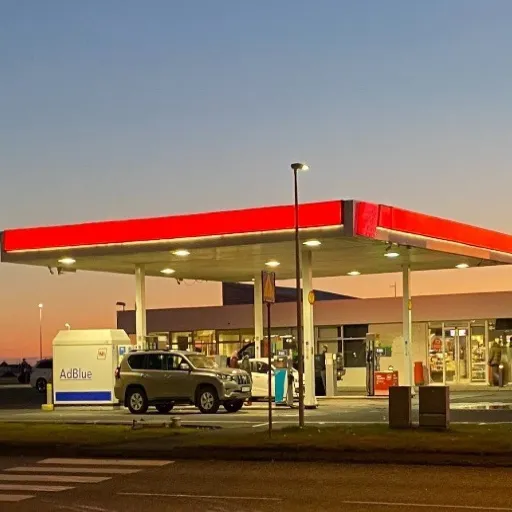
Depending on the location, size, and type of services offered, the cost to build a gas station can vary widely.
The price will average between $1 million and $5 million for land purchase, construction, equipment, and initial inventory. The major scope of work will include fuel tanks, pumps, setting up convenience stores, as well as permits and licenses. Businesspersons should carry out market research and prepare a well-detailed business plan to consider every item of associated costs and the funding requirements.
Factors Influencing the Cost
These important factors greatly determine the cost of opening a gas station:
1
Location and Land Value
The placement of a gas station is one of the most determining factors of the overall cost associated. Land in urban or better high-traffic areas fetches a greater money offer than one in rural areas, but carries higher revenue potential. The site being easily accessible and visible to the customers further increases the footfalls and hence operational costs.
2
Construction and Design
The bigger the size and scope of the gas station and amenities such as a convenience store or a car wash, the higher the construction costs. A high-end design with additional features or eco-friendly infrastructure demands even more investment than a plain-bordered setting.
3
Equipment and Technology
Installing fuel storage tanks, fuel dispensers, and other systems to be able to charge customers presents a high percentage of the installed cost. The latest technologies, including those promoting automated payment systems or renewable energy options, might ultimately raise their costing initially, but in the long run, they tend to lessen the actual costs while providing operational services.
4
Licensing and Permits
They often have permits, fees to get approval from a variety of legal entities defined locally, at the state level, and/or federally. They may cover environmental permits, zoning approvals, and operational licenses, all depending on location.
5
Initial Inventory and Staffing
The initial inventory needs to stock various parts of the convenience store and keep sufficient stocks of fuel. Another aspect of the cost is to ensure that the right amount of qualified staff can be recruited and trained. Initial stock levels and workforce size of demand are considered when making plans.
Hence, an analysis of these factors will help the entrepreneur to put a price on their venture and, hence, will actually benefit their cost management.
Cost of Permits and Licenses
Gas station permits and licenses carry an ever-changing cost dependent on location, the type of services offered, and the local codes. Generally, licenses will include environmental permits; certifications for underground storage tanks; health licenses that allow the sale of food; and an alcohol license if alcohol sales are included.
Additional costs may accompany zoning approval in the local municipality or city, or inspections. It is wise to carry out some searching for particular requirements within a state or county to see if they conform with a broader concept that non-compliance can call for a heavy fine or delay in operation.
Land and Location Expenses
Several factors determine prices for plots or locations. Land rates change with site area, neighbourhood, and demand. Cities or commercial areas having traffic usually command higher price rates than more rural or less commercial density-rate areas. Also, the next big decision is whether to rent the place or own it outright: rent is less costly upfront, but it can end up being more expensive in the long term. All other factors, like construction charges, property taxes, or even the installation of utilities, should go into the price. The location of the business, relative to its target population and the legal requirements of the area, is key to the smooth functioning and success of the business. By carefully evaluating these factors, you can arrive at a careful balance between budget and operational requirements.
Building a Gas Station: A Comprehensive Guide
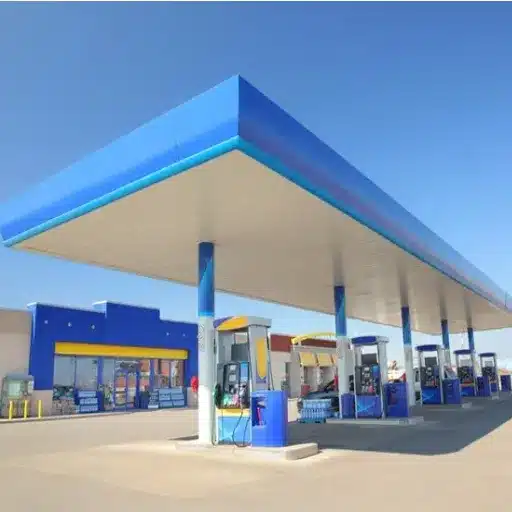
Key Considerations for Building
- Should You Be Renting or Buying? Renting would be less expensive in the beginning; thus, it suits businesses with lower initial costs. On the other hand, when one purchases a property, it can act as a long-term investment and reduce rental payments for the duration of time they rent.
- What Are the Major Expenses? Running major expenses include construction costs, property tax, fuel storage, and dispensation equipment, with operational utilities being the minor ones. Budgeting well thus truly sets the smooth flow of setup and operations.
- Where Is It Located? Finding a site close to areas of high traffic and your target customer base is key. Consider how easily vehicles can enter, how visible the site will be from major roads, and local zoning laws and restrictions.
- What Legal Aspects Need to Be Considered? Zoning and environmental laws must be observed. Get the requisite permits, including those that control fuel storage and business operation.
- How to Balance Costs Against Profits? Limit costs by optimizing construction within quality standards. Establish good pricing and marketing schemes to generate consistent traffic, resulting in profit generation over time.
Construction Costs Explained
The construction costs to build a gas station can vary significantly depending on its location, size, and complexity of design.
Since the major aspects affecting the budget are as follows:
- Site Preparation and Land Acquisition: The land cost varies according to the location, with lands in urban and high-traffic areas considered costlier. Site preparation costs include clearing the site, leveling the land, and assuring soil stability.
- Building and Structural Costs: Primary construction is performed for the convenience store, canopy, and installation of the fuel pumps. Materials of good quality may raise the initial construction price, but at the same time, they ensure the durability of the building for a longer period with less maintenance.
- Fuel System Setup: The installation of underground fuel tanks, the pumps, and the piping required one of the costliest installations. This installation must comply with environmental standards to avoid any groundwater contamination.
- Permits and Compliance: Zoning fees, environmental permits, and construction inspections all add together to form quite a lot of expenses. It’s extremely important to keep all regulatory agreements so that further delays and fines are avoided.
- Equipment and Technology: Costs include payment systems, security cameras, LED signs, and perhaps EV charging stations. EV infrastructure has become a necessary feature in any modern gas station.
Being thoroughly accurate during cost estimation and seeking advice from professionals will go a long way in effectively managing the cost route that would guarantee passing through legal and environmental specifications.
Essential Features of a Gas Station
Every design of a gas station must consider convenience, safety, and satisfy the consumer. Here are the criteria that modern gas stations ideally hold:
Modern Gas Station Features
- Fuel Options: Multiple types of fuel should be provided, the most popular being regular, premium, diesel, and increasingly, EV charging stations, so as to appeal to a larger customer base and evolve with automotive trends
- Convenience Store: A convenience store that stocks all kinds of snacks, refreshments, groceries, and auto-related supplies will draw more customers and earn higher revenue
- Restroom Facilities: Clean and accessible restrooms are an absolute need for customer satisfaction and building a good reputation
- Safety Features: Proper lighting, surveillance cameras, and fire safety systems shall ensure the safety of clients and employees
- Ease of Access: Good traffic flow will come from an intuitive station layout featuring clearly marked fuel lanes and parking areas, alongside easy-to-use entry and exit points
- Payment Systems: The modern payment options that are contactless and through mobile apps can enhance the customer’s shopping experience and facilitate faster transactions
- Sustainability Features: Being equipped with energy-efficient LED lighting, recycling bins, and EV charging stations will make the building sell points to environmentally conscious customers while keeping up with industry trends
By integrating the above features, gas stations can improve their operations, attract more customers, and maintain their competitiveness amidst a rapid shift in markets.
Choosing the Right Supplier
Choosing the right supplier can be a make-or-break decision for your station. Potential suppliers, thus, should be evaluated according to reputation, reliability, and customer reviews. Those who can promise on-time delivery and good quality over time will be ideal. Consider the price list of the suppliers and contract terms that fit your budget and requirements to operate properly. Do they offer any value-added services? For instance, service repairs and maintenance, marketing assistance, or training initiatives. Check that environmental and safety regulations are being followed to guarantee that standards are being met. Suppliers who have very good customer service and respond promptly to your business needs should be your number-one priority. Striking a balance between cost-effectiveness with quality, and support will work for cementing a partnership that will bring you long-term success.
Buying vs. Starting a Gas Station Business
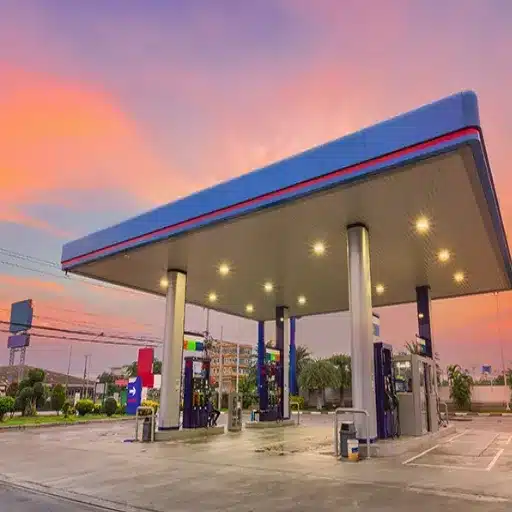
Conversely, choosing an existing gas station over a new venture requires some factors to think about:
Advantages:
- Immediate operation capability
- Established customer base
- Proven location and revenue streams
- Existing brand recognition (if applicable)
Considerations:
- Higher upfront investment
- Potential equipment aging issues
- Inherited operational problems
- Limited customization options
Advantages:
- Complete control over design and layout
- New equipment with warranties
- Custom brand development
- Modern technology integration
Considerations:
- Longer time to market
- Higher construction costs
- Uncertain customer acceptance
- Complex permitting process
In the long run, it comes down to money, time, and what you want for a future business.
Cost Breakdown of Buying a Gas Station
Key expenses that one should take into consideration while buying a gas station include:
| Expense Category | Cost Range | Details |
|---|---|---|
| Purchase Price | $250,000 – $1,000,000+ | Depends on location, size, and business profitability |
| Real Estate and Land | $50,000 – $3,000,000+ | May include land ownership or require a separate lease |
| Licensing and Permits | $10,000 – $40,000 | Business permits, environmental compliance, fuel storage permits |
| Inventory and Equipment | $50,000 – $200,000 | Fuel inventory, convenience store products, equipment updates |
| Branding Agreements | Varies | Franchise fees or royalties for a major oil brand affiliation |
Knowing these cost components paints a clearer financial picture for anyone considering this investment, as exact numbers depend on the location and specific circumstances. It is advised for the buyer to contact an expert financial advisor for fine-tuning and drawing up a sustainable business plan.
Advantages and Disadvantages of Each Option
Advantages of Partnering with a Major Oil Brand
Brand Recognition and Trust
By associating with a known oil brand, customers may be attracted to the outlets just by their trust in the brand with respect to quality and image, thus bringing in more foot traffic and selling opportunities.
Marketing and Support
The highest-profile brands all provide their franchisees with the marketing support, loyalty programs, and operational training needed to ensure that business processes align and accelerate growth.
Established Supply Chain
Being the partner gives the promise of ensuring reliable supplies of fuel and other products so that logistics concerns are diminished and a very satisfactory level of consistency is maintained in product quality.
Disadvantages of Partnering with a Major Oil Brand
High Startup Costs
Franchise fees and royalties or contractual obligations, which are more stringent than independent operations, usually translate into much higher initial and ongoing costs.
Limited Autonomy
Strict branding and operational guidelines can limit a business owner’s flexibility in making decisions or executing new ideas suited to their particular market.
Market Saturation
Being part of a large and well-known brand might mean competing with other stations under the same brand, and hence limiting market share and profitability.
Advantages of Operating Independently
More Flexibility
The independent operators can have complete control over their pricing, marketing kind of strategies, and store products; hence, responding quickly to local customers’ needs in many instances.
Lower Fees
Without paying for franchise fees or royalties, owners can put a greater share of earnings back into their operation, which might lead to higher margins.
Unique Branding
The capability to create and develop a brand identity that helps to distinguish the station in the crowded market.
Disadvantages of Operating Independently
Limited Brand Recognition
Without the umbrella of a larger oil brand, the place can be hard to attract customers to, especially in saturated or competitive areas.
No Corporate Support
The independent owners lose marketing prowess, training programs, and other resources that branded franchises possess.
Potential Supply Chain Challenges
Procurement of reliable fuel suppliers and keeping the prices competitive may demand enormous effort and negotiation, which eventually places additional risk.
Long-term Financial Considerations
In analyzing the long-term financial considerations for operating an independent gas station, some key elements emerge, ranging from profit margins to considerations of branding and customer loyalty. Traditionally, profit margins in the fuel trade have been pretty thin, with most of the revenues coming from ancillary sales at convenience stores or establishments. Well-established customer loyalty can take quite some time and require committed effort, especially when large-brand franchises are not ferrying name recognition. Additionally, fluctuations of fuel prices and volatility in the world oil market significantly affect profit margins; thus, cost management and pricing strategies are given utmost emphasis. Besides this, independent owners would need some long-term planning for maintenance costs concerning the infrastructure, such as underground fuel tanks, which can be really high. One can have a lot of autonomy in operating independently and pay fewer franchise fees for that, but then that requires proactive financial planning for it to be sustainable and competitively performing in the long run.
Creating a Business Plan for Your Gas Station
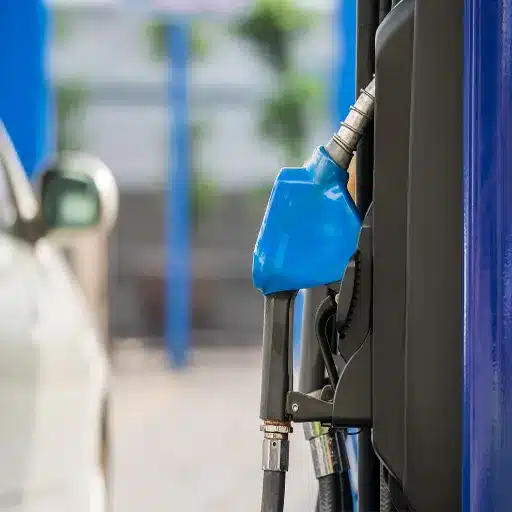
Your gas autonomous sale station business plan must consider some important working factors that will guide it to be successful and sustainable.
Analysis of the Market
Study the local market to analyze the demand, competition, and customer demographics. Make consideration for what will set your gas station apart from others in being competitive in pricing, services offered, or location.
Financial Planning
List startup costs, ongoing expenses, and revenue opportunities. For instance, selling fuel, sundry items in the convenience store, carwash, or other complementary services, maintenance of infrastructure such as underground fuel tanks, wages of employees, or utility bills for operational needs.
Location and Infrastructure
Pick a location with heavy traffic and plan the layout of buildings to enhance convenience for users, such as ample space for fuel stations, parking, and truck or big vehicle access. Design considerations should include future upgrades, interoperability for environmental authority audits, etc.
Marketing and Competition Strategy
Market your services by promoting how your station generates value for customers, including loyalty programs, special offers, and working with other established local businesses or entities. For pricing and promotion purposes, competitive analysis is needed.
Operation Setup
The operation structure will include a determination whether it will be operated independently or is going to be under a brand. Sometimes deciding for brand-based creates higher licensing fees and branding costs, which increases the burden of compliance to they become franchise agreement costs.
Together, all these categories have included areas of attention. This business plan will give you a clear strategy and, most importantly, help attract potential investors or secure loans.
Essential Components of a Gas Station Business Plan
1
Location Analysis
Picking an ideal location is the very heart and soul of gas-station success. High traffic areas and proximity to highways should sit at the top of the consideration list. Easy vehicle access is a must. Also, take into account the competition nearby, population density, and pertinent zoning laws to make sure the site fits well with your business objectives.
2
Market Demographics
Get to know your target customers through local demographic studies. Are they commuters, families, or truck drivers? Know your clientele and you can provide serviced store offerings relevant to them: certain types of fuels, extra amenities like car washes, and so forth.
3
Fuel Supply and Pricing Strategy
Make sure you can work with a dependable fuel supplier for regular supplies, negotiate the best prices to maximize margin, look into prices charged by competitors, and set a price-oriented strategy catering to customer attraction and fair profitability.
4
Operational Costs and Revenue Streams
List out, in simple terms, the cost structure: rental, utilities, labor, and fuel charges. Investigate secondary revenue streams like car repair, EV charging stations, or fresh food services to generate supplementary income and further solidify your long-term future.
Quick and exhaustive attention to these aspects will help your business plan become a thorough map for putting up and running the aforementioned gas station.
Financial Projections and Cost Analysis
Accurate financial projections and cost analysis begin with an estimate of initial startup costs, right from the land purchase and construction, to equipment, and permits. Then are the calculations of operating costs: rent, utilities, labor, and maintenance. Provisions for revenues are based on the sale of fuel and convenience goods, alongside any other revenues from services like EV charging or car washes. An analysis would then be made to identify profitability and break-even points to ensure the favorable running of the station throughout its life. We would make adjustments as necessary in line with realistic market trends and challenges faced in operations.
Choosing Suppliers and Managing Inventory Costs
Choosing suppliers and managing inventory with an eye towards profitability and smooth operation is made critical here. First and foremost, vendors that offer competitive pricing yet cannot compromise on quality will go at the top of the list for suppliers. Establish relationships with suppliers who can ensure timely deliveries and good payment terms. Diversifying suppliers also safeguards from potential dependency or shortages.
Keep inventory in check by following up with a system that tallies stock levels in real-time to avoid overstocking or understocking. Keep a tab on sales trends to sift out goods that are high in demand and place orders accordingly. Consider inventory turnover when making decisions on space allocation to cut down on holding costs. Automated inventory systems, moreover, can smooth operations, enhance accuracy, and reduce labor costs from manual tracking. With this set of actions, one can ensure cost-effectiveness and self-responsiveness to the needs of end customers.
Important Final Considerations
Opening a gas station is a significant business undertaking that requires substantial capital investment, thorough planning, and ongoing operational excellence. Before proceeding with any gas station venture, it’s essential to:
- Conduct comprehensive market research
- Consult with industry professionals and business advisors
- Secure adequate financing and maintain cash flow reserves
- Understand all regulatory requirements and environmental obligations
- Develop relationships with reliable suppliers and contractors
- Create detailed financial projections and contingency plans
Reference Sources
2. Analysis of a Gas Station Hybridization with a Solar Thermal Plant Using ETAP
3. Consumer Protection Related to Dispensing Pump Manipulation in SPBU (Gas Station)
Frequently Asked Questions (FAQs)
How much does it cost to get a gas station started?
Gas station start-up costs could range anywhere from a few hundred thousand dollars to a few million dollars, depending on where it is located and its size and services rendered. These costs traditionally involve land acquisition, construction costs, permits, equipment costs, fueling, inventory for convenience items, and so on.
Well, what does it cost to head down and open a gas station?
Head down and open a gas station is subject to factors including the purchase of land and floors, construction for the station, and putting in the gas pumps and all other equipment and necessities. Usually, these costs would mount somewhere between $1 million $2 million, depending on the size of a gas station and its siting, especially if it is set up right by highways or busy intersections.
What all is included in the breakdown of gas station construction costs?
The construction cost breakdown involves land acquisition and preparation of the site, constructing the core station building, installing the gas pumps, erecting signs, and complying with all local and municipal regulations. Utility hookups and landscaping may also be worked into the construction costs.
What are the costs of operating a gas station?
The cost of starting a gas station needs careful planning and budgeting. They could include the purchase of a franchise, permitting and licensing fees, construction, and equipment. Then you need to consider the operational costs for staffing, insurance, utilities, and so on.
How can I calculate the cost to build a gas station?
To determine the cost to build a gas station, you should start with a market analysis to assess land prices, construction costs in your area, and the value of permits. But it is advisable to hire design-build pros who can give you a more professional estimate of what’s required to build a gas station because every gas station project is different.
What are the operational costs of owning a gas station?
Operational costs in owning a gas station include, among others, the purchase of fuel, maintenance of equipment, employee wages, utilities, and insurance. Marketing, inventory controls, and road services are other expenses that need to be factored into owning the gas station. All can contribute toward profitability being a gas station.
How do I find a gas station franchise for sale?
The purchase of a gas station franchise involves searching for existing franchises, appraising the cost involved, and dissecting the franchise agreement. Generally, it requires an upfront investment of franchise fees, combined with construction fees and fees for equipment fees. Prospective owners should then evaluate the type of support and training the franchisor is willing to provide for establishing this business successfully.
What factors will determine how much it costs to set up a gas station?
Various factors influence the cost to set up a gas station, including the location, local regulations, and the size of the station. The form that gas station operations operate under, self-service or full-service, will also negatively or positively impact the cost. Another significant factor that will influence the operational as well as set-up costs is the availability of suppliers and fuel costs.
How important is a business plan for a gas station?
A business plan is important for a gas station because it charts the operation strategy, the market, expected costs, and the financial projections. It acts as a roadmap for opening your gas station and could be crucial when looking for funding through investors or banks. A well-written business plan will identify challenges and opportunities within the gas station industry.
- How Does A Fuel Dispenser Work?
- Automated Fuel Dispenser: Revolutionizing Fuel Management
- Transfer Pump: Understanding Fuel and Water Transfer Solutions
- Profit Margin for Gas Stations: Understanding Gasoline Revenue and Profitability
- What is a Transfer Pump Used For: Understanding Types and Applications
- Explosion Proof Lighting: Understanding Explosion Proof LED Lights for Hazardous Areas
- What Is the Difference Between a Fuel Dispenser and a Gas Dispenser?
- What Prevents the Fuel Pump Inside the Fuel Tank from Catching Gasoline on Fire


